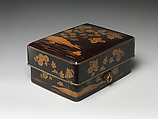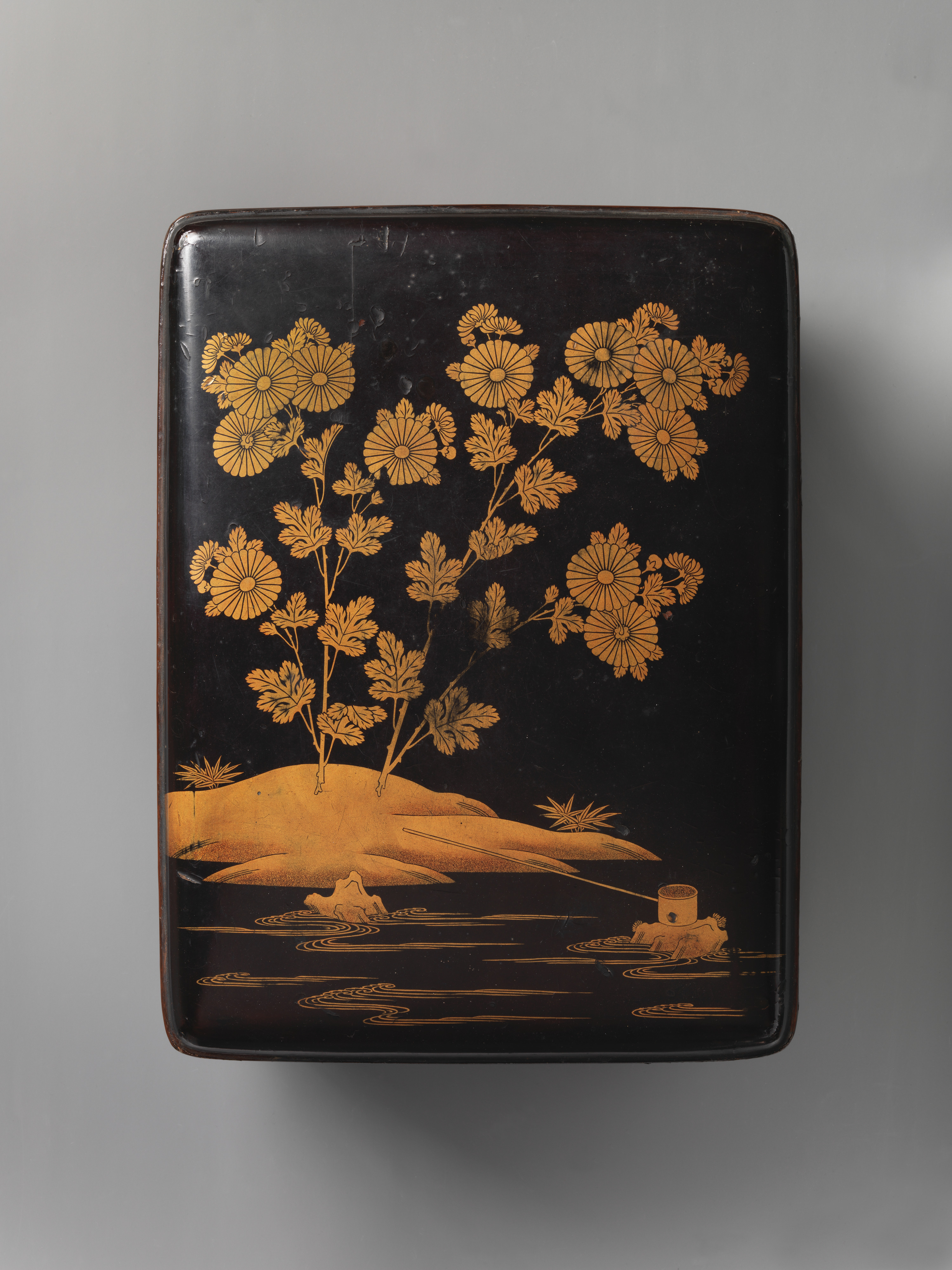Box for Accessories (Tebako) with Chrysanthemum Boy (Kikujidō) Pattern
Not on view
Stylized, single-layered chrysanthemum blossoms, rendered in perfect circles using a burnished maki-e technique, recall earlier Kamakura-period (1185–1333) lacquers. The bamboo ladle, flowers, and river depicted on the lid refer to Chrysanthemum Boy (Kikujidō), the Noh play based on a story from ancient China. In it, an emissary of the emperor in search of a source of healing waters encounters a young boy. Having been banished from court centuries before, the youth had continued to diligently copy a couplet from the Lotus Sutra, one of the most important scriptures of Buddhism, on chrysanthemum leaves. Unaware of the lapsed time and having drunk from the stream where dew drops from the chrysanthemums had fallen, he was freed from aging and illness. In the play, the miraculous water is offered to the emperor for a distinguished and long life.
Due to rights restrictions, this image cannot be enlarged, viewed at full screen, or downloaded.
This artwork is meant to be viewed from right to left. Scroll left to view more.



